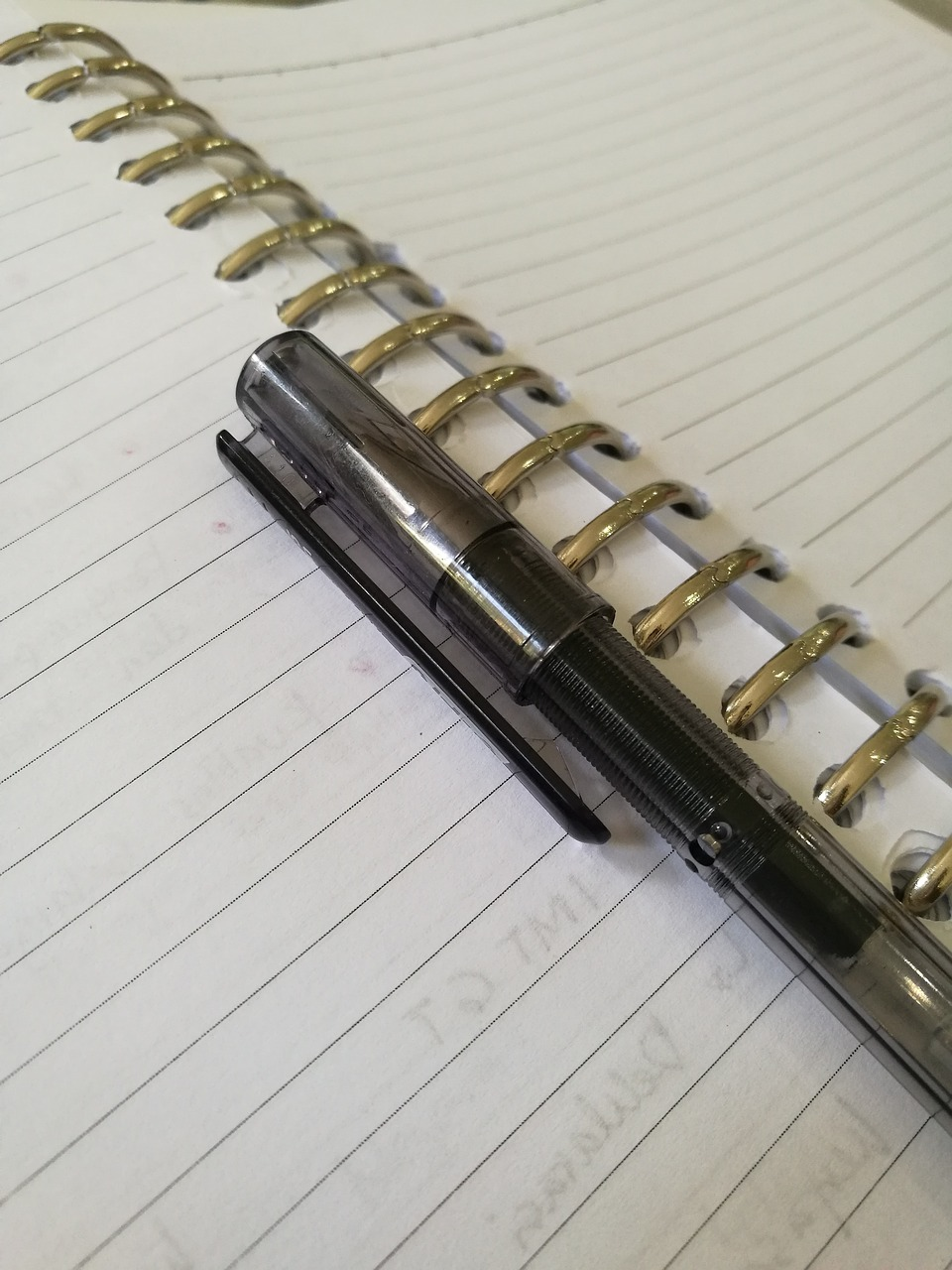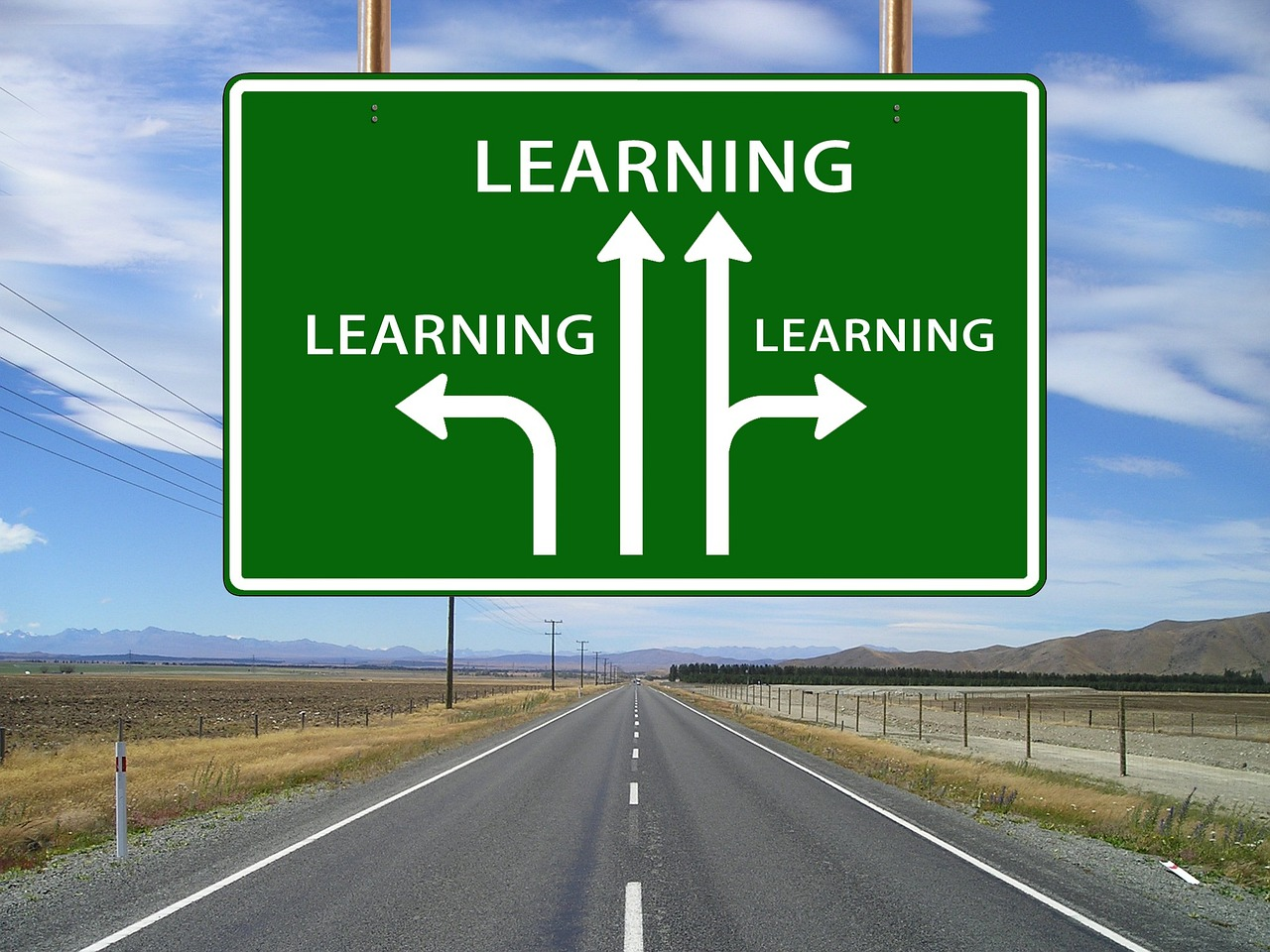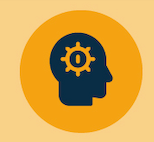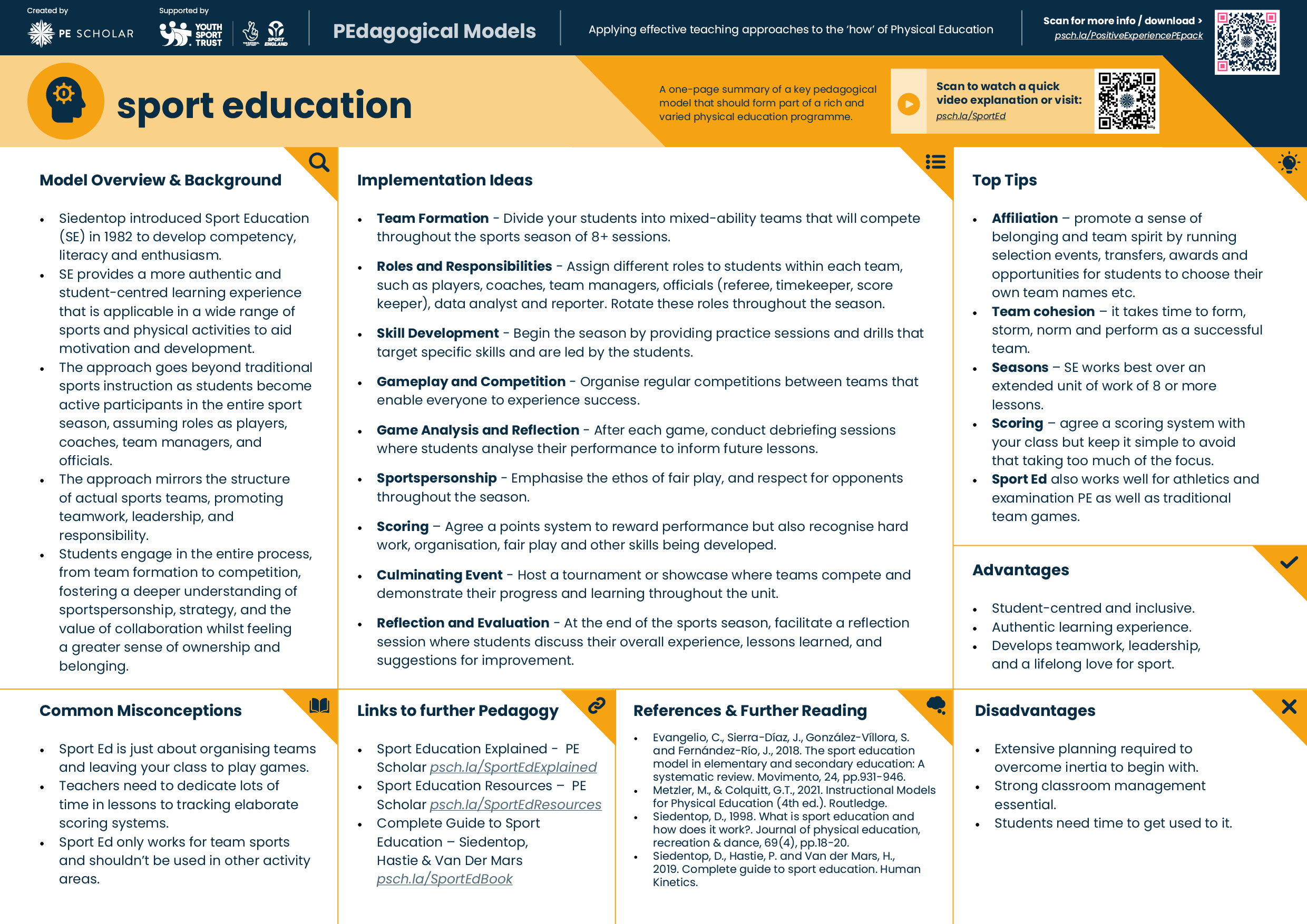
Applying effective teaching approaches to the ‘how’ of Physical Education (PE)
In this series, we present six one-page summaries of key Pedagogical Models that should form part of the diet of rich and varied PE delivery.
Each of these models provides a structured framework to guide the teaching and learning process, enhancing the overall effectiveness of physical education programmes.
The benefits of applying PE pedagogical models
Organised and purposeful lesson plans
Pedagogical models help PE educators create learning material and carefully planned lessons designed to address key learning objectives. They also promote a systematic progression of skills and knowledge to meet intended learning outcomes, facilitating a logical and effective learning journey for students.

Differentiated instruction
Moreover, these models contribute to differentiated instruction, allowing teachers to tailor their approach to meet the diverse needs and abilities of students. By incorporating various and effective teaching strategies and styles, pedagogical models enhance engagement and understanding among students with different learning preferences. Variety is the spice of life and all that!

Incorporation of critical life skills
Additionally, the use of pedagogical models in PE delivery supports the development of critical life skills such as teamwork, communication, creativity and problem-solving. Structured lesson plans enable educators to integrate these skills seamlessly into physical activities, promoting holistic student growth.

Holistic development
It is widely accepted that PE has the potential to develop physical, cognitive, social and affective domains of learning. By using a rich variety of ‘models’ in your practice it can pave the way to move ‘beyond the physical’ to recognise, develop and celebrate wider skill development that is essential to success in PE, in sport, and in life.
Assessment and evaluation
Furthermore, employing pedagogical models assists in the assessment and evaluation of student progress. The models prompt the incorporation of measurable criteria for evaluating individual and collective achievements in PE, aiding in the identification of areas for improvement and adjustment of instructional strategies.

Today’s PEdagogical model: sport education
Introduced by Daryl Siedentop in 1982, the Sport Education Model (SEM) aims to cultivate competency, literacy, and enthusiasm in students by providing an authentic and student-centred learning experience applicable to a diverse range of sports and physical activities.
Differentiating itself from traditional sports instruction, SEM involves students actively participating in entire sport seasons, assuming roles such as players, coaches, team managers, and officials. This mirrors the structure of actual sports teams, fostering teamwork, leadership, and responsibility. Students engage in the entire process, from team formation to competition, promoting a deeper understanding of sportsmanship, strategy, and collaboration, fostering a sense of ownership and belonging.
The model emphasises skill development, game understanding, and tactical decision-making over mere skill acquisition, and encourages peer assessment and reflection, enhancing accountability and self-awareness.
Utilising SEM in Physical Education contributes to a more meaningful and enjoyable experience, instilling a lifelong appreciation for sports and promoting a healthy, active lifestyle.

Advantages
- Student-centred and inclusive learning environment
- Authentic learning experience
- Develops teamwork, leadership, and a lifelong love for sports and physical activity.
Disadvantages
- Extensive planning required to overcome initial inertia
- Strong classroom management essential and students need time to get used to this approach
One-page summary – sport education
Download the attached one-page summary for further information on sport education
Curriculum development: Why not use it to guide a PE department meeting followed by a period of testing and instructional coaching to help develop your repertoire of approaches to teaching.
It includes a short video available via the QR code to bring it to life along with:
Implementation ideas
Top tips
Common misconceptions
Links to further pedagogy

Coming soon! Next in the series
Look out for the next in our PEdagogical models series:
Health-based PE (HbPE)
Teaching personal and social responsibility (TPSR)
Previous PEdagogical models in the series
You can also access previous posts and one page summaries on:
Direct instruction by clicking here
Cooperative learning by clicking here
Games-based approaches by clicking here
Further information
Read
To better understand the Sport Education Model (SEM) read our insight, Sport Education Explained
Resources
PE Scholar has numerous resources for physical educators on sport education.
Research
Operationalising physical literacy through sport education



Responses